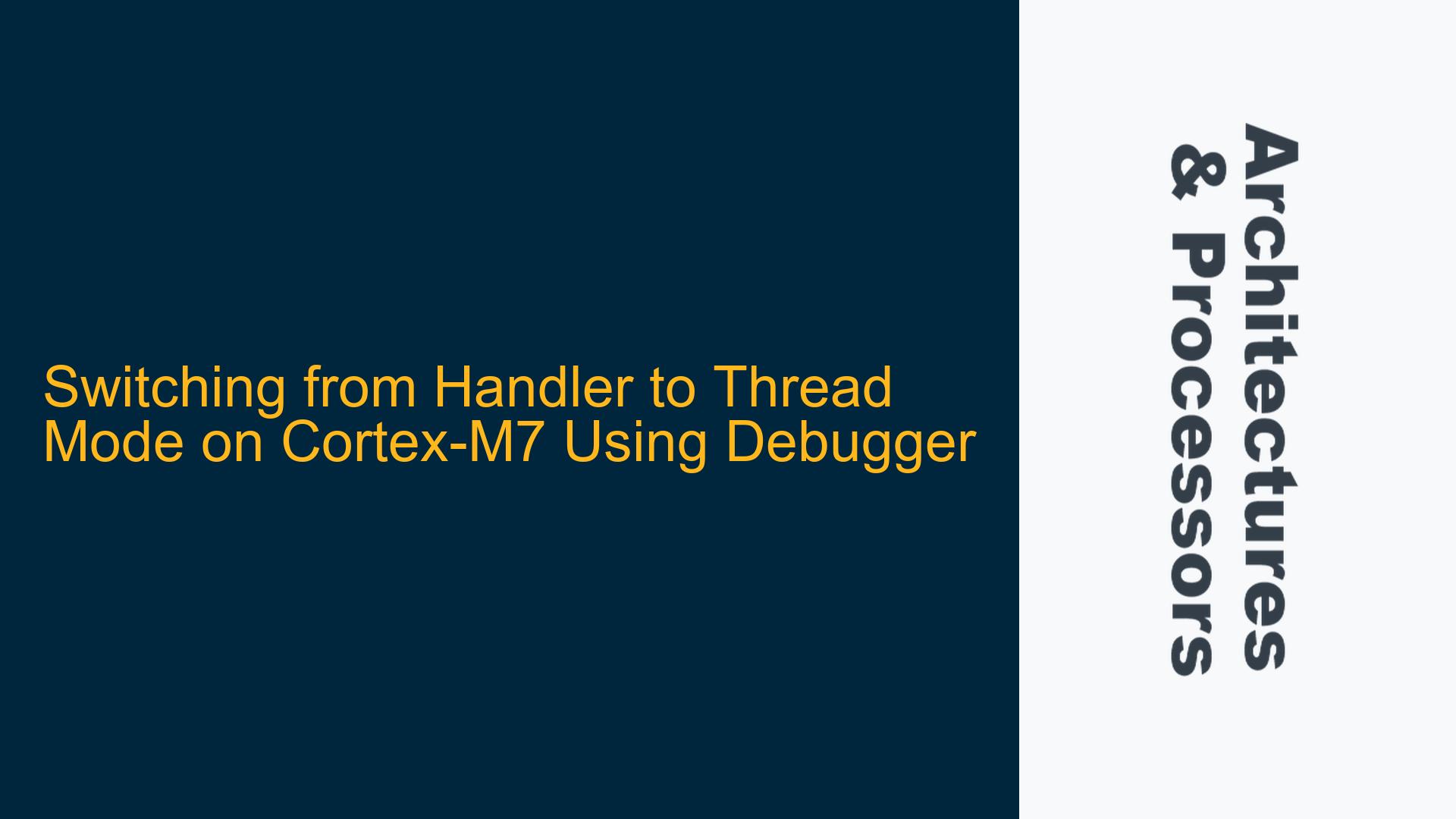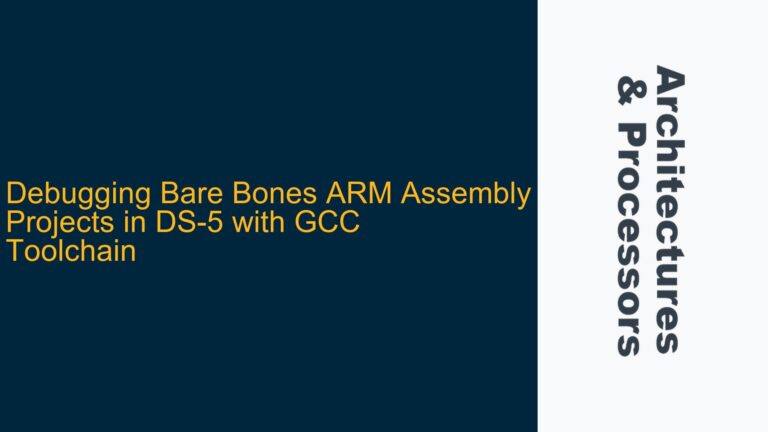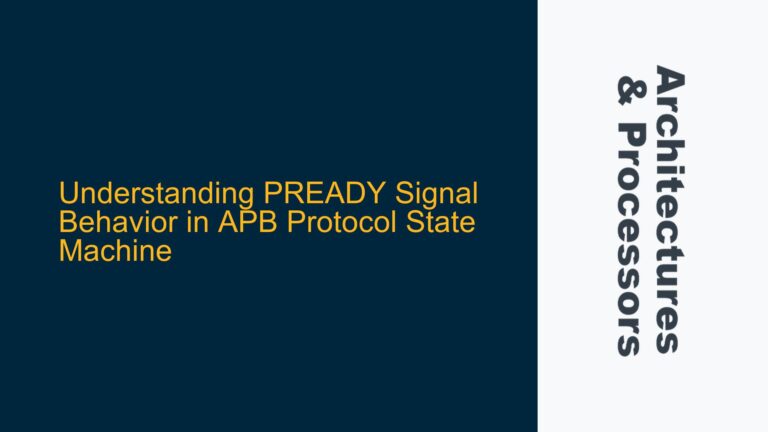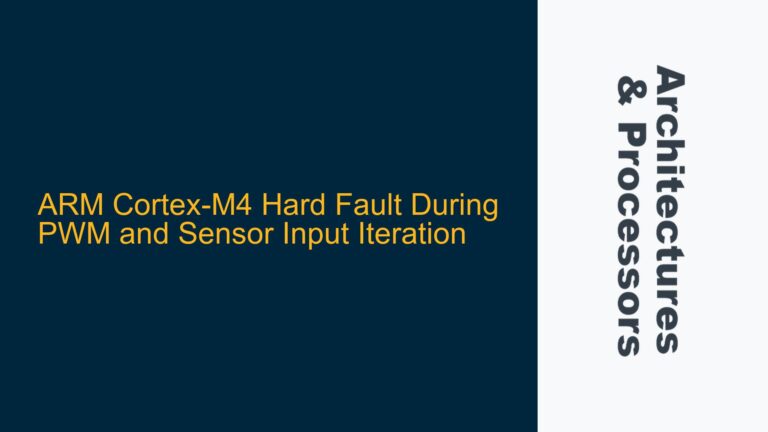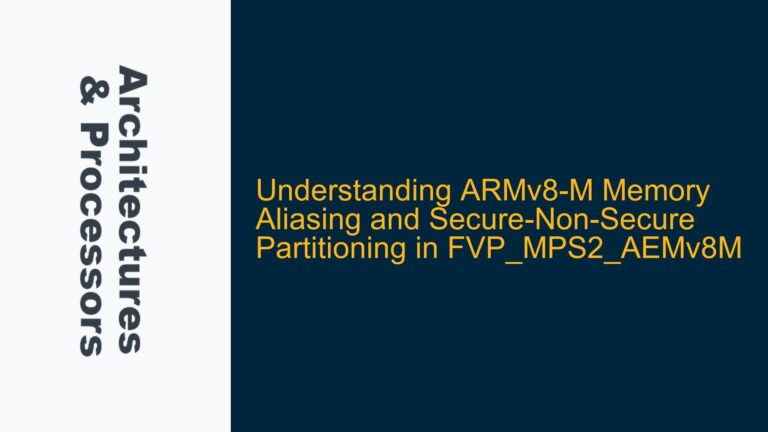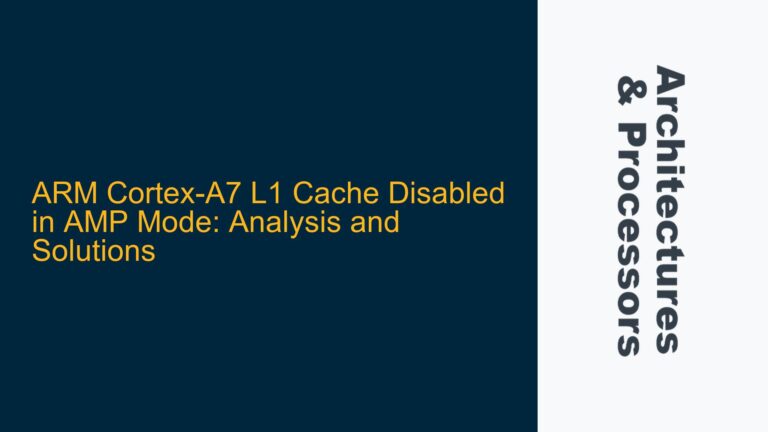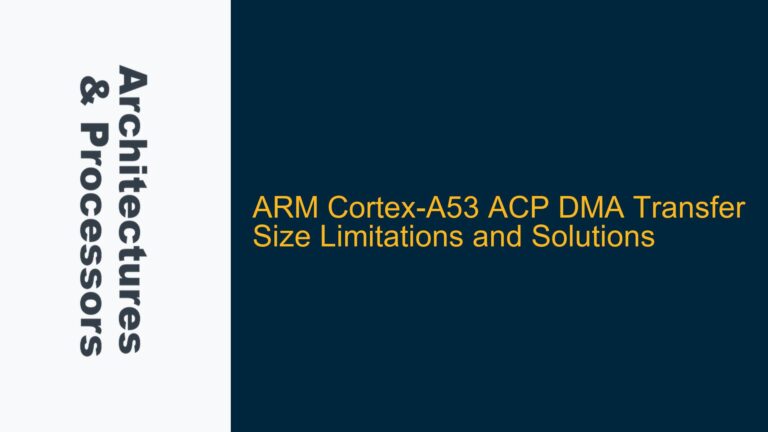Cortex-M7 Handler Mode Constraints During Hard Fault Recovery
When working with ARM Cortex-M7 processors, one of the most challenging scenarios is recovering from a hard fault while operating in Handler mode. Handler mode is a privileged execution mode entered when an exception occurs, such as a hard fault, and it restricts certain operations that are otherwise permissible in Thread mode. Thread mode is the default mode for executing application code and is either privileged or unprivileged depending on the configuration. The Cortex-M7’s dual-mode operation (Handler and Thread) is a fundamental aspect of its architecture, designed to ensure robust exception handling and system stability.
In the context of debugging, if a Cortex-M7 target enters a hard fault, the debugger typically connects to the system while it is in Handler mode. This poses a significant challenge when attempting to restore a binary image, set the Program Counter (PC) to the start of the image, and resume execution. The primary issue stems from the fact that Handler mode has limited access to certain registers and system controls compared to Thread mode. For instance, modifying the Control Register (CONTROL) to switch between privileged and unprivileged Thread mode is not directly possible in Handler mode without first transitioning back to Thread mode.
Additionally, the Cortex-M7’s memory protection unit (MPU) and cache configurations may further complicate the recovery process. The MPU, which is often used to enforce memory access rules, might be configured to restrict access to critical regions of memory when in Handler mode. Similarly, the cache behavior during a hard fault and subsequent recovery can lead to inconsistencies if not properly managed. These constraints make it difficult to perform a straightforward restoration of the system state and resume normal operation.
Understanding the Cortex-M7’s exception handling mechanism is crucial for addressing this issue. When a hard fault occurs, the processor automatically saves the context of the interrupted thread onto the stack. This context includes the Program Counter, Link Register, and other key registers. The processor then enters Handler mode and begins executing the hard fault handler. While in Handler mode, the processor has access to the Main Stack Pointer (MSP) instead of the Process Stack Pointer (PSP), which is typically used in Thread mode. This distinction is important because the MSP and PSP point to different memory regions, and the stack frames they manage are structured differently.
The challenge of switching from Handler mode to Thread mode using a debugger arises from the need to manipulate the processor’s state in a way that is not directly supported by the debugger’s standard commands. Most debuggers provide mechanisms to reset the processor, but this approach may not be suitable in all cases, especially when the goal is to preserve the existing memory state or avoid a full system restart. Furthermore, the hardware implementation of the debug interface can influence the effectiveness of a reset operation, as some implementations may not fully restore the processor to a clean state.
Debugger Limitations and Processor State Manipulation
The inability to directly switch from Handler mode to Thread mode using a debugger is primarily due to the limitations of the debugger’s command set and the Cortex-M7’s architectural constraints. Debuggers are designed to provide visibility into the processor’s state and allow developers to modify registers, memory, and other system components. However, they do not typically include commands to directly change the processor’s execution mode. This limitation is rooted in the ARM architecture’s design, which prioritizes security and stability by restricting mode transitions to specific instructions executed by the processor itself.
One of the key architectural constraints is the requirement to use the Exception Return (EXC_RETURN) mechanism to transition from Handler mode to Thread mode. The EXC_RETURN value is loaded into the Link Register (LR) when an exception occurs, and it determines the mode and stack pointer to be used upon returning from the exception. To switch back to Thread mode, the processor must execute a return instruction (e.g., BX LR) with an appropriate EXC_RETURN value. This mechanism ensures that mode transitions are controlled and predictable, preventing unauthorized or unintended changes to the processor’s state.
In the context of debugging, the lack of direct support for manipulating the EXC_RETURN value or executing a return instruction from Handler mode complicates the process of switching to Thread mode. While some debuggers allow developers to modify the LR and other registers, they do not provide a straightforward way to execute the necessary return instruction. This limitation forces developers to resort to alternative approaches, such as resetting the processor or manually reconstructing the stack frame to simulate a return from exception.
Another factor contributing to the difficulty of switching modes is the potential for inconsistent or corrupted state information in the event of a hard fault. When a hard fault occurs, the processor’s state may be partially modified or incomplete, making it challenging to reconstruct a valid stack frame for the return to Thread mode. The hard fault handler itself may also modify the processor’s state, further complicating the recovery process. In such cases, attempting to manually switch modes using the debugger can lead to unpredictable behavior or system crashes.
The hardware implementation of the debug interface can also impact the ability to switch modes. Some debug interfaces may not provide full access to the processor’s internal state, limiting the debugger’s ability to manipulate critical registers or execute specific instructions. Additionally, the timing and synchronization of debug commands can affect the processor’s behavior, particularly in systems with complex memory hierarchies or multiple cores. These factors must be carefully considered when attempting to recover from a hard fault and switch modes using a debugger.
Manual Mode Transition and System Recovery Techniques
To address the challenge of switching from Handler mode to Thread mode on a Cortex-M7 processor, developers can employ several manual techniques to manipulate the processor’s state and achieve the desired mode transition. These techniques involve a combination of register manipulation, stack frame reconstruction, and careful management of the processor’s execution flow. While these methods require a deep understanding of the Cortex-M7 architecture and the specific system configuration, they provide a viable path to recovery in situations where a full reset is not feasible.
The first step in manually transitioning from Handler mode to Thread mode is to ensure that the processor’s state is consistent and valid. This involves verifying the contents of key registers, such as the Program Counter, Link Register, and Stack Pointer, and ensuring that they point to valid memory locations. If the processor’s state is corrupted or inconsistent, it may be necessary to manually reconstruct the stack frame to simulate a return from exception. This process requires detailed knowledge of the Cortex-M7’s exception handling mechanism and the structure of the stack frame.
Once the processor’s state is validated, the next step is to modify the Link Register (LR) to contain the appropriate EXC_RETURN value for the desired mode transition. The EXC_RETURN value determines the mode (Thread or Handler) and the stack pointer (MSP or PSP) to be used upon returning from the exception. For a transition to Thread mode, the EXC_RETURN value should be set to indicate a return to Thread mode using the Process Stack Pointer (PSP). This value can be calculated based on the desired mode and stack pointer configuration.
After setting the EXC_RETURN value in the Link Register, the processor must execute a return instruction to initiate the mode transition. This can be achieved by modifying the Program Counter (PC) to point to a return instruction (e.g., BX LR) and then resuming execution. The debugger can be used to set the PC to the address of the return instruction and then continue execution, allowing the processor to transition to Thread mode. It is important to ensure that the return instruction is located in a valid memory region and that the processor’s state is consistent before resuming execution.
In addition to manual mode transition, developers can also implement system recovery techniques to restore the processor to a known good state. This may involve resetting specific peripherals, reinitializing the memory system, or reloading the binary image from a backup source. These techniques can be combined with manual mode transition to achieve a comprehensive recovery solution. For example, after switching to Thread mode, the processor can execute a recovery routine to reinitialize the system and resume normal operation.
The following table summarizes the key steps involved in manually transitioning from Handler mode to Thread mode on a Cortex-M7 processor:
| Step | Description |
|---|---|
| 1 | Validate the processor’s state, including the Program Counter, Link Register, and Stack Pointer. |
| 2 | Reconstruct the stack frame if necessary to simulate a return from exception. |
| 3 | Set the Link Register (LR) to the appropriate EXC_RETURN value for the desired mode transition. |
| 4 | Modify the Program Counter (PC) to point to a return instruction (e.g., BX LR). |
| 5 | Resume execution to initiate the mode transition. |
| 6 | Implement system recovery techniques to restore the processor to a known good state. |
By following these steps and carefully managing the processor’s state, developers can successfully switch from Handler mode to Thread mode on a Cortex-M7 processor using a debugger. This approach provides a flexible and effective solution for recovering from hard faults and other exception conditions, enabling continued operation of the embedded system.
